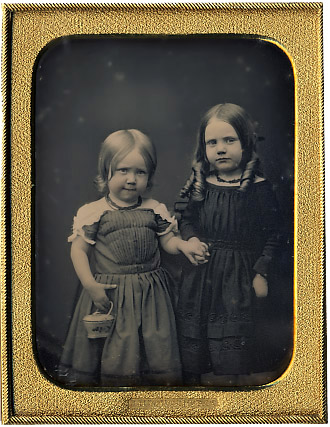The only thing better than doing dogged research is profiting from someone else’s. (Okay, maybe not….) But this is still what I was thinking last month while my husband was off teaching his morning course at the Chautauqua Institution and Nora and I were enjoying our breakfast while looking out the bay window at Lake Erie. It was a lovely week and a respite from the heat (not to mention another reason not to complain), and while we were so close, we decided to take Nora to Niagara Falls for the day. (“Mama, big water! See BIG water!” was Nora’s oft-repeated account of the visit.)
Tourism is, I’m happy to report, alive and well at the Falls, but that’s really nothing new. There’s great debate over the first European to see the Falls (various candidates visited the area throughout the 1600s), but generally, Pehr Kalm, a Swedish-Finnish naturalist, is credited with offering the first scientific account of their wonders around 1750. Sketches and various artist renderings of the Falls region began to appear, and it didn’t take long for Niagara Falls to start appearing on everything from needlework pictures to wallpaper, transferware plates to lithophane lampshades.
Over roughly the next one hundred years, tourism at Niagara blossomed and by 1848, a footbridge was constructed. (A footbridge. In 1848. Who needed to be a Wallenda….) Fortunately, the 19th century also brought John Roebling (perhaps better known for his work on the Brooklyn Bridge), whose suspension bridge was completed in 1855. Several years later, as the Civil War ended and the Victorian era hit full swing in the United States, tourism, made especially attractive through rail travel, exploded, and Niagara Falls earned its reputation as a great honeymoon destination. This boom also ushered in the era of a new kind of Niagara Falls souvenir – the photograph. Today, there are dozens and dozens, probably hundreds, of large-plate daguerreotypes and ambrotypes of newlyweds, like the one pictured above, or family groups posed in front of the Falls. The daguerreotypes, particularly full-plate images, can be very valuable. I’m pretty sure the same will never be said of Nora’s souvenir t-shirt….
-Hollie Davis, Senior Editor, p4A.com
Reference & Further Recommended Reading:
To search the Prices4Antiques antiques reference database for valuation information on hundreds of thousands of antiques and fine art visit our homepage www.prices4antiques.com





